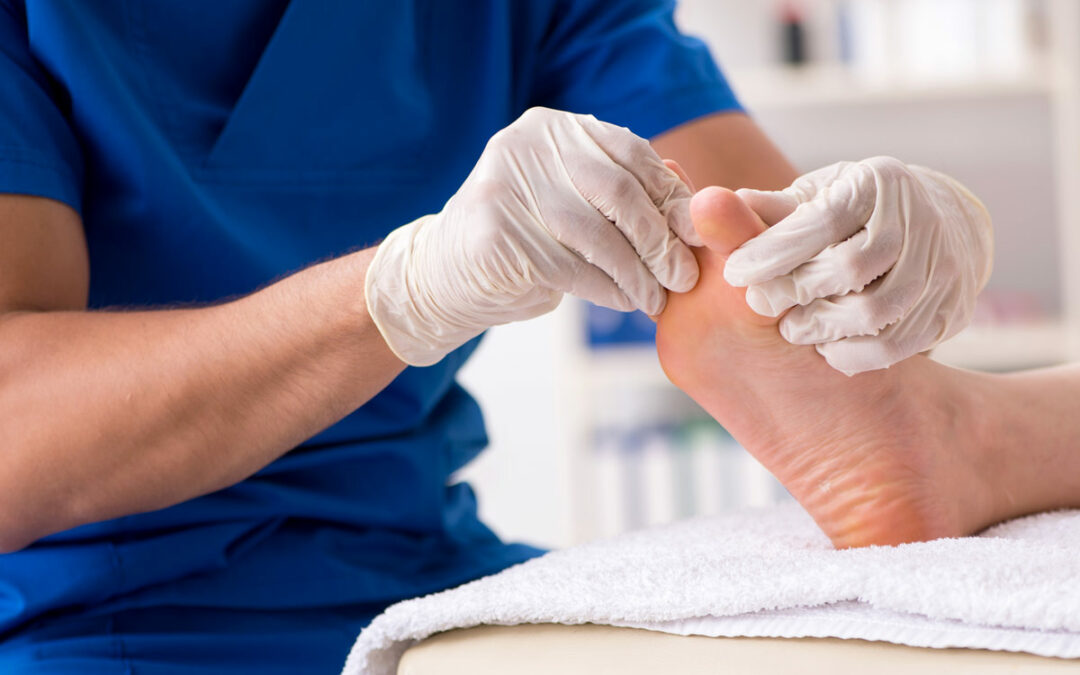After a lifetime of our feet supporting us, many seniors suffer from foot issues and foot pain. However, foot pain does not need to be a normal part of aging. Issues can be evaluated by a podiatrist and often addressed to reduce or eliminate the problem. There are a variety of foot problems, here are three common ones:
1. Corns, callouses and dry skin:
- What are they? Corns and callouses are areas of thickened skin that develop to protect that area from irritation. It often develops when something rubs on that spot repetitively or causes excess pressure to that area. Corns and call uses have similarities but are different. Corns are smaller and have a hard center, often found on the tops and sides of feet or between toes, and can be painful when pressed. Calluses are rarely painful, typically develop on the soles of feet, and vary in size and shape but are typically larger than corns. They are often accompanied by dry skin. This can lead to cracked skin that is more prone to infection.
- What can be done? Podiatrists can conduct an examination of the foot, take a medical history, and inspect shoes and walking. For mild corns or calluses, the podiatrist might suggest different shoes or added padding. For larger corns and calluses, with a painless procedure, they can be reduced by shaving away the thickened, dead skin.
2. Fungal infections:
- What are they? Fungus infection, which can occur if feet are constantly damp, might lead to infections of the toenails and between the toes. It is more common in the elderly and those with diabetes. This may or may not be painful. For nail fungus, it can cause nails to become darker in color, smell foul, and become thicker which makes it difficult to trim the nails and makes walking more painful with shoes. Caregivers and family members can contract a fungus from an infected senior, especially when caring for their feet or clothing.
- What can be done? Even if there is no pain, if there is discoloration, thickening, or deformity of the toenails, a podiatrist can be consulted. Podiatrists can examine the foot to determine the nature and severity of the infection and create a treatment plan, oftentimes in conjunction with their physician. For the caregiver, latex gloves can be helpful to avoid contracting the fungus.
3. Ingrown toenails:
- What are they? Ingrown toenails are the most common nail impairment. It is often caused by improperly trimmed nails, heredity, or pressure from shoes causing crowding of toes. The issue this creates is when the nail’s corners or sides dig into the soft surrounding tissue. This can lead to pain or irritation, redness, swelling or an odor.
- What can be done? A podiatrist can remove the portion of the nail that is ingrown and may prescribe, or work with the physician to prescribe, medication to treat the infection.
Comprehensive Mobile Care associated podiatrists provide care directly within your facility. They bring all necessary equipment and supplies to set up a mini-podiatry office in the comfort and safety of your own environment. Contact us to find out how Comprehensive Mobile Care can help you care for your participants’ and residents’ foot health and, accordingly, overall health.
Sources:
https://health.usnews.com/health-care/patient-advice/articles/2019-01-16/why-foot-care-is-critical-for-seniors
https://www.apma.org/Patients/FootHealthList.cfm
https://www.mayoclinic.org/diseases-conditions/corns-and-calluses/symptoms-causes/syc-20355946
